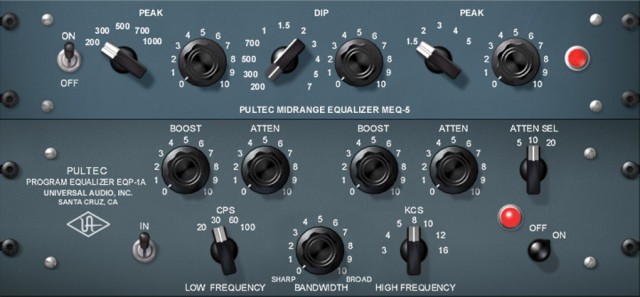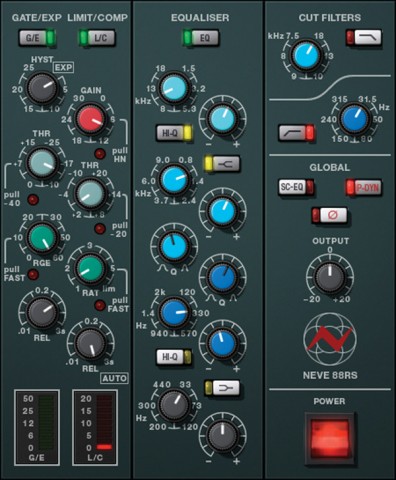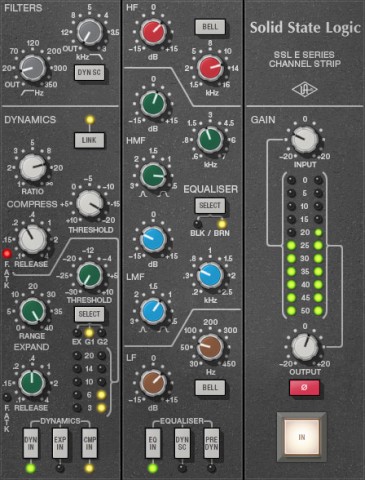One of the most frequently asked music questions I get is what EQ plug-in I use on my mixes. It may seem like an easy question to answer, but it’s not.
[ad#Google Adsense 300×250 in story]First, I have to say this. Don’t be satisfied with a crappy recording and think that you can “fix it in the mix.” Some professional engineers are magicians with EQ and compressors, but the better the recording, the better your results will be. Take the time to make a good recording and then worry about the mix.
Now that I have that out of my system, let’s talk about EQs.
Remember, the job of the EQ is to make room for all of the instruments in your mix. It’s all about adding and cutting frequencies to give everything a comfortable place to live.
For instance, your hi-hats don’t need any of the low-end frequencies that the kick drum really wants. In this case, you could cut everything below 200 Hz as a starting point. That gives your kick more room on the low-end and you aren’t negatively affecting the hi-hat.
I only use Universal Audio (UA) plug-ins in my songs. They work with some of the best audio gear ever made and emulate that gear into their plug-ins. When I say emulate, I mean that they study and map out every circuit so it sounds exactly like the piece of gear they are working with. If you turn a knob on the original hardware gear, and turn the same knob on the plug-in, the results are pretty much identical.
When I sit down with a mix and I’m looking for the sound of a Neve 88 RS console, I can get that with a UA plug-in. That authenticity is extremely important for your overall sound.
Typically, I’ll mix and match plug-ins because I like certain EQs for certain jobs. For instance, I’ve been using the Trident A-Range EQ for the kick drum. It does a great job of highlighting those low frequencies and giving the kick a solid place to live in the mix.
One of my favorite EQs is the Pultec Pro. This is an absolute gem of an EQ that has the ability to simultaneously boost and attenuate a single frequency at the same time, only with subtle differences in the cut and boost, so you get some really interesting resonant frequencies and a sound that many people find pleasing to the ear. And it does it with the vintage sound of the Pultec.
One way to figure out what you want to use is do some investigation of the type of songs you like. Is there a particular recording that you really love?
Do some research. Find out where that album was recorded and what gear was used in the recording. For the most part, that information is on the Web. Finding that information could be key in what EQ you want to use.
Often times when I talk to people about what they want to do with their mix, they mention EQ, compression and gate — basically everything. That’s not a bad thing, but you won’t be able to do all of that with an EQ alone.
In that case, I would recommend you look at one of UA’s Channel Strips. They have an SSL and a Neve 88RS — both are excellent plug-ins. The decision will really come down to your own personal taste.
There are no wrong decisions in choosing an EQ plug-in. It’s all about the sound you want and how the plug-in will interact with the type of music you’re mixing.
Universal Audio has nine EQ plug-ins and two Channel Strips. I use them all on a regular basis and love how they all work for different reasons.
If I was pushed to choose one plug-in that would give you the most bang for your buck and quality sound — I would go with the Neve 88RS. I love the sound of a Neve and more often than not, when I start a mix, I’ll use the 88RS. It’s got everything you’ll ever need and then some.




